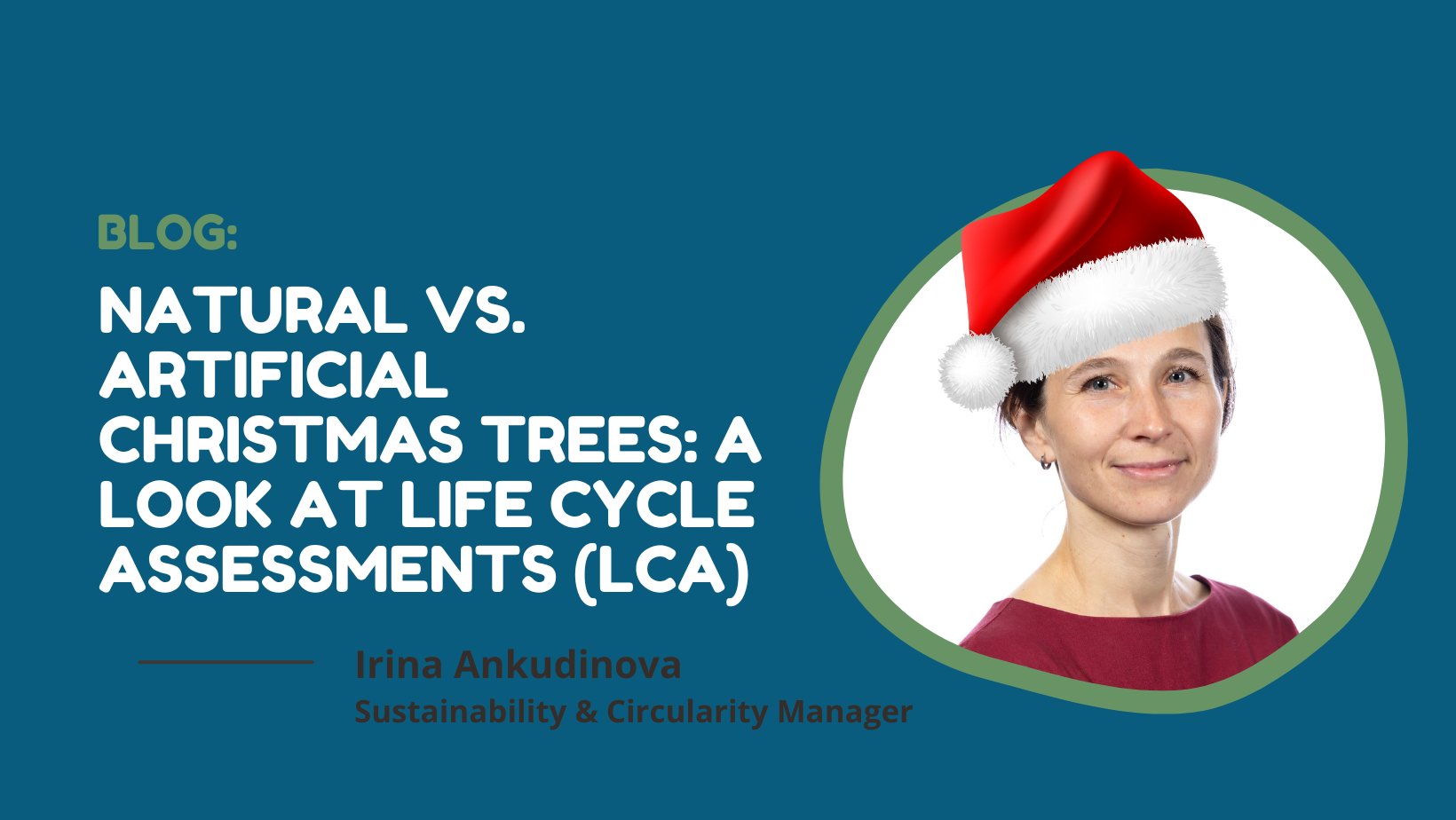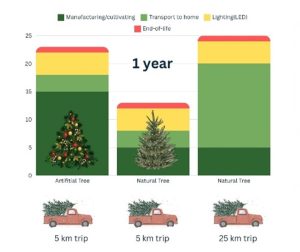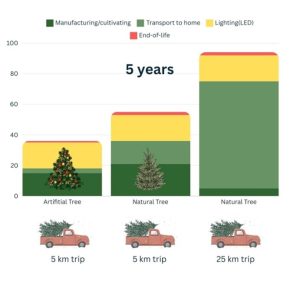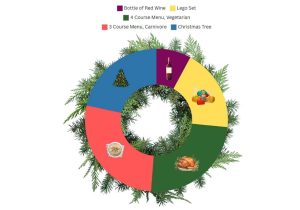Natural vs Artificial Christmas Trees: A Look at Life Cycle Assessments (LCA)

The choice between a natural or artificial Christmas tree has long been a topic of debate, particularly when considering environmental impact. Life Cycle Assessments (LCA), which evaluates the environmental impacts of a product from production to disposal, can provide insights into the ecological footprint of each option. Here are some highlights from Christmas Tree LCA Studies:
- The most significant environmental impact of artificial Christmas trees is associated with the manufacturing life cycle stage (51‐77%).[1]
- The overall impacts of the natural tree are significantly influenced by the chosen End‐of‐Life treatment. [2] Composting or mulching minimises emissions, while landfilling can release methane.
- The transport distance travelled to purchase the annual Christmas tree is a significant factor in the tree’s overall life cycle. [3]
- Most LCAs suggest at least 5–10 years to break even with natural trees in terms of emissions.[4]
- The break even years to keep an artificial tree, such that the impacts are comparable to the natural tree purchased annually, is dependent on the End-of-Life option for the natural tree.[5]


A bit of DIY?
ESU sustainability services offer a Christmas Tree LCA calculator. Users can enter travel distances and Christmas Tree types to calculate more relevant results to their situation. https://esu-services.ch/software/christmastrees/
See the perspective:
Another important aspect of Life Cycle Assessment that can be useful in our decision-making is putting things in perspective. For example, in the case of packaging, a lot of attention is often attracted to the environmental impact of certain packaging types, while packaging only contributes to a small proportion of the total product impact (e.g. packaging accounts for less than 1% of the total impact of packaged meat).[6]
The impact of the tree life cycle, for all scenarios, is less than 0.1% of a person’s annual carbon footprint.[7] Therefore, carpooling or biking to work only one to three weeks per year would offset the carbon emissions from both types of Christmas trees.[8]
It is also not the main contributor to the environmental impact of festive activities, where unnecessary purchases and food waste will have a higher impact.

Relative impact of common festive activities kgCO2eq, adapted from https://esu-services.ch/software/christmastrees/
Both natural and artificial Christmas trees have environmental trade-offs. To minimise your impact:
- Choose a locally sourced natural cut tree and compost or mulch it at the end-of-life or
- Rent/reuse potted natural trees or
- Invest in a high-quality artificial tree (second-hand even better!) and commit to reusing it for a decade or more.
LCA is a powerful tool for decision-making. In the case of Christmas Trees, it can help identify the “hot spots” in the product lifecycle, understand trade-offs, facilitate better design and identify the less impactful process or treatment.
The RECOUP and BPF LCA Library contains various studies describing the environmental impact of plastic materials, products, production processes, recycling, and waste management. RECOUP also offer an LCA Service which can help to conduct tailored LCA studies on products and services.
For more information on the LCA Library or LCA Service get in touch lca@recoup.org
[1] Comparative Life Cycle Assessment of an Artificial Christmas Tree and a Natural Christmas Tree, 2010
[2] Comparative Life Cycle Assessment of an Artificial Christmas Tree and a Natural Christmas Tree, 2010
[3] Comparative Life Cycle Assessment of an Artificial Christmas Tree and a Natural Christmas Tree, 2010
[4] https://www.thinkstep-anz.com/resrc/blogs/pine-or-plastic-the-sustainability-of-christmas-trees-lca/
[5] Comparative Life Cycle Assessment of an Artificial Christmas Tree and a Natural Christmas Tree, 2010
[6]https://pureadmin.qub.ac.uk/ws/files/258397198/Accepted_Manuscript_Comparative_life_cycle_analysis_of_a_biodegradable_multilayer_film_and_a_conventional_multilayer_film_for_fresh_meat_modified_atmosphere_packaging_and_effectively_accounting_for_shelf_life.pdf
[7] Comparative Life Cycle Assessment of an Artificial Christmas Tree and a Natural Christmas Tree, 2010
[8] https://www.christmastrees-wi.org/uploads/content_files/files/LCA_Christmas_Tree_ellipsos.pdf